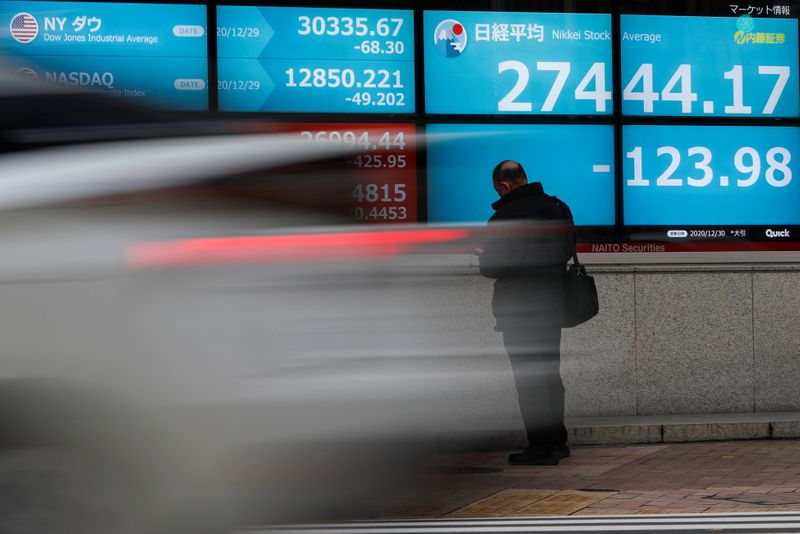LONDON (Reuters) - European shares rose after a shaky start and the dollar edged up on Wednesday, while the 10-year U.S. Treasury yield fell from 10-month highs, helped by policymakers pushing back against talk of the Fed tapering its support.
After Asian equities saw modest gains, European shares opened lower then rose slightly, with the pan-European STOXX 600 up 0.2% on the day at 0918 GMT.
MSCI world equity index, which tracks shares in 49 countries, was up 0.2%, edging back towards all-time highs, and MSCI's main European Index was up by a similar amount.
China recorded its biggest daily jump in COVID-19 cases in more than five months, despite four cities being in lockdown, and the Dutch government said it would extend lockdown measures on Tuesday.
Investors are closely tracking the discussion around tapering - that is, the Fed's possible easing of monetary stimulus.
Several Federal Reserve policymakers, including Loretta Mester, Esther George, James Bullard and Eric Rosengren pushed back on the idea of the Fed tapering its asset purchases any time soon.
These comments, along with a well-received auction of 10-year Treasuries, pushed the U.S. 10-year yield back down, away from the 10-month high of 1.187% reached in the previous session.
At 0919 GMT, the benchmark yield was at 1.1189%.
The yield curve, which had reached the steepest since May 2017 on expectations for big fiscal stimulus under a new Democratic administration, narrowed slightly to 96.8 basis points.
"We believe the potential for fiscal stimulus, along with a normalization of economic activity as the vaccine rollout ramps up, justify slightly higher US Treasury yields," UBS strategists wrote in a note to clients.
"To acknowledge this, we have raised our 10- and 30- year US Treasury yield forecasts by 0.1 percentage points this year to 1.0% and 1.7%, respectively, by end-December," they said, adding that they do not expect the run-up in yields to go much further than that because central banks remain accommodative and the Fed has signalled a tolerance for higher inflation.
In light of the recent yield jump, U.S. December inflation data due at 1330 GMT will be closely watched.
The U.S. dollar recently broke its downward trend with a three-day winning streak, then resumed falling on Tuesday. It was steady overnight but picked up in early London trading on Wednesday, calling into question whether its bounce was over.
At 0920 GMT, it was up 0.1% at 90.136 versus a basket of currencies.
With at least five Republicans joining the Democrats push to impeach President Donald Trump over the storming of the U.S. Capitol, Marshall Gittler, head of investment research at BDSwiss Group, said that preventing Trump from running for office in future would "permanently remove the “Trump premium” from the dollar and allow the currency to weaken further."
In Europe, government bond yields dipped. Italian bonds, which sold off on Tuesday due to political uncertainty, lagged behind Germany.
Euro zone industrial production data for November is due at 1000 GMT.
Versus the dollar the euro was down around 0.2% at $1.21875 at 0920 GMT. Riskier currencies such as the Australian and New Zealand dollars also fell as the U.S. dollar edged higher.
Bitcoin edged up slightly but, at $34,999 was still around 17% down from the all-time high of $42,000 it reached on Friday last week.
Oil prices rallied, gaining for the seventh straight day, with U.S. West Texas Intermediate and Brent crude both trading at their highest since February, after industry data showed a bigger than expected drop in inventories and investors shrugged off the impact of the pandemic.
